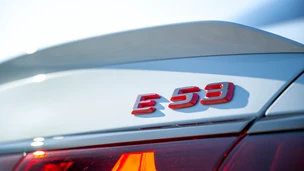The Dacia Sandero is the cheapest supermini you can buy in the UK – so it is fair to say that expectations are probably not going to be high for budding customers. But at the end of the day, even if you are spending just £5,995, no one wants to get ripped off.
Since its UK launch in 2013, the Renault-owned Dacia brand has slowly but surely earned respect in the UK, with the Sandero supermini and Duster crossover models being integral to its affordable image.
Although affordable, the Sandero is still up against the likes of the Ford Fiesta, Peugeot 208, Renault Clio, Vauxhall Corsa and, unfortunately for Dacia, this list goes on.
Performance
There are quite a few engines available in the Sandero range – including a 1.2-litre petrol and 1.5-litre diesel.
However, it is arguably the 0.9-litre three-cylinder petrol that will grab people’s attention, due to the growing popularity of frugal three-cylinder units across the board. The 0.9-litre petrol produces 89bhp and 140Nm of torque, taking 11.1 seconds to reach 62mph.
For such a small engine, the 0.9-litre delivers a surprising kick, although it still doesn’t touch the Ford Fiesta’s award-winning 1.0-litre EcoBoost however, which produces 99bhp and completes the 0-62mph sprint in 10.8 seconds. If the EcoBoost wasn’t roaming the halls of the supermini segment, Dacia’s little 0.9-litre would have a lot more of the limelight.
The 1.5-litre diesel has the same power output, and is a little slower to reach 62mph, but its 220Nm of torque makes it feel more powerful for overtaking. But, overall we would recommend driving the petrol first, you will be pleasantly surprised.
Ride and Handling
The first thing you will notice about the Sandero is its well-weighted steering.
The first thing you will notice about the Sandero is its well-weighted steering, much different to its city car and supermini competition as they tend to feel extremely light. The steering can lack a little feedback at times, but overall the weightier feel allows you to have a bit more fun on the road, especially in the corners. There is also unfortunately a fair bit of body roll in the corners. Refinement is so so in the Sandero, as the suspension can be too firm at times and there is prominent cabin noise, due to the grumble of the three-cylinder engine and lack of insulation. The slightly noisy cabin only really becomes apparent when you are clocking up motorway miles. On country roads or nipping around the city, it shouldn’t bother you too much.
Interior and Equipment
Although Dacia is Romanian, it is actually owned by the French brand Renault, and many components are shared with the Clio.
The interior of the Sandero is as expected, very stripped back – with the entry level Access models having to do without a radio. The top of the range Laureate trim we had featured the likes of air-con, cruise control, electric rear windows and electronically adjustable heated mirrors. When it comes to practicality, the Sandero is really impressive, offering loads of head room thanks to its boxy shape and enough leg room to keep it in line with its competitors. Boot space is even more impressive, with 320 litres of storage space on offer, bigger than the Ford Fiesta and Renault Clio. This space extends to 1,200 litres when you fold the seats down. The only thing that is a slight nuisance is the high loading level. This could prove problematic if you need to load heavy objects.
Cost
With a starting price of £5,995, the Sandero is a large chunk cheaper than the Ford Fiesta and Peugeot 208.
With a starting price of £5,995, the Sandero is a large chunk cheaper than the Ford Fiesta and Peugeot 208. Even in the most lavish Laureate guise we tested, the Sandero is still cheaper. The only thing that lets it down when it comes to cost is its fuel economy, with its 0.9-litre petrol returning an average of around 57.7mpg, it is a fair bit off its competitor’s figures of 60-65mpg. Its CO2 figure of 109g/km is also off the mark, as it needs to be closer to the 100g/km threshold if it wants to tackle the likes of Ford’s 1.25-litre EcoBoost (99g/km) or Peugeot’s 1.0-litre VTi (99g/km). The 109g/km figure also results in a road tax bill of £20 every year, whereas cars emitting sub 100g/km are road tax free. But it’s incredibly low price tag may overshadow all the finer details for some.
Our Verdict
It goes without saying that the Sandero’s interior is a bit cheap and cheerful. Its drive on the other hand delivers unexpected surprises. The essence of a supermini for many will be low cost and functionality, and if that is the case then the Sandero is a great little motor. You will find it surprisingly easy to live with, with no-nonsense performance on the road and not all-too-shabby looks. If low price and practicality attracted you to the Sandero, then you will not be disappointed.




